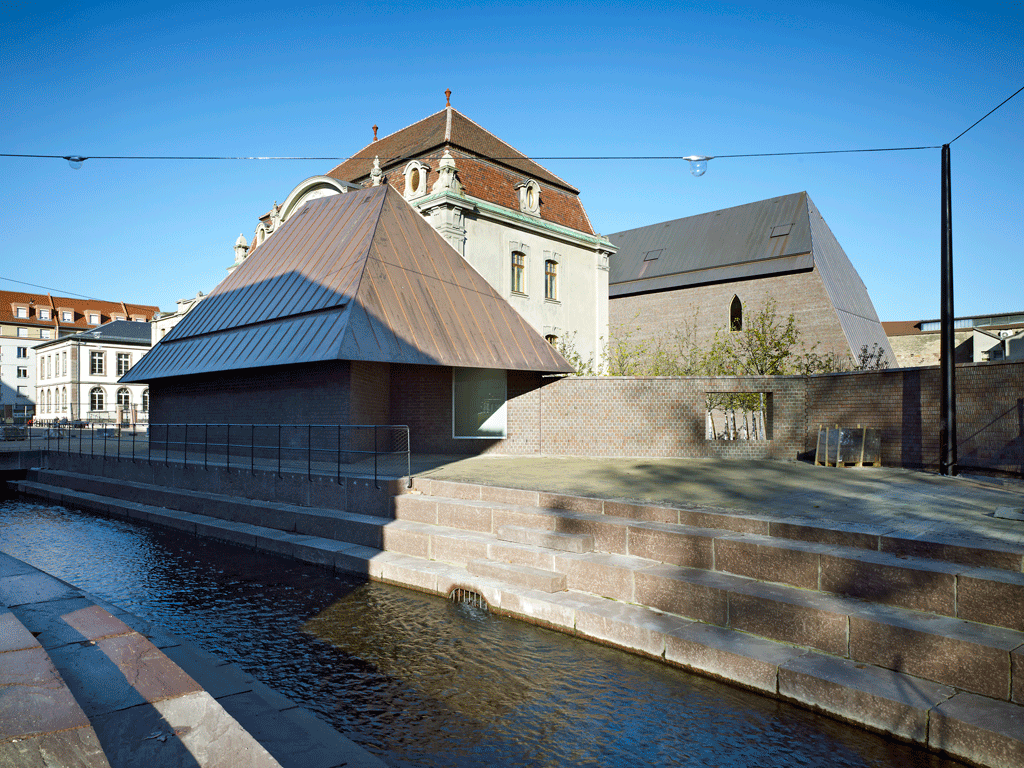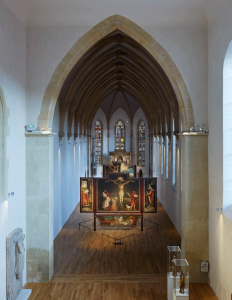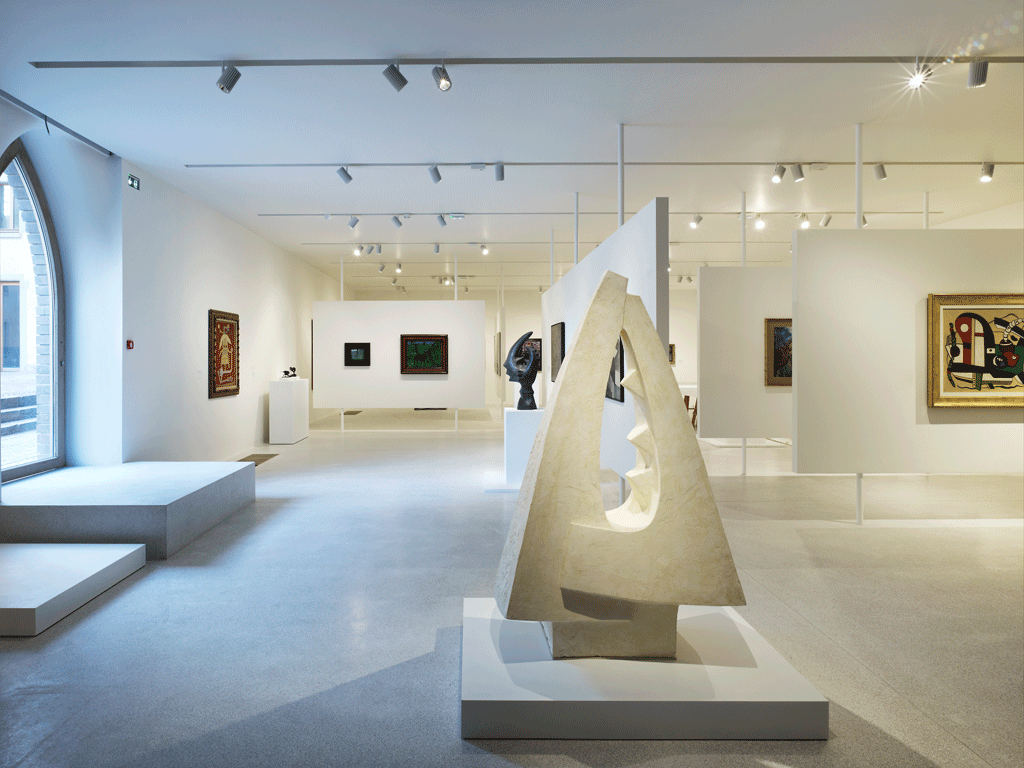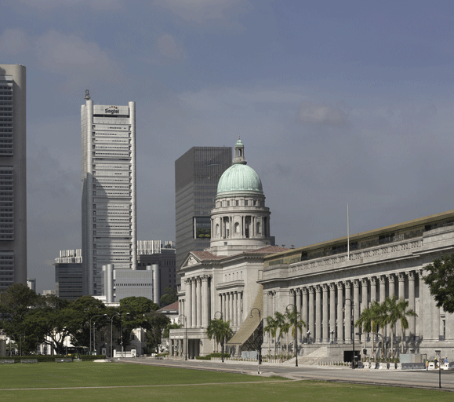Herzog et de Meuron’s links in Colmar

On 23 January 2016, the new Unterlinden Museum should be inaugurated with great fanfare, in the presence of President François Hollande. The operation consisted in partially restoring the Dominican cloister and extending the exhibition spaces on the other side of Unterlinden Square, rehabilitated for the occasion. A delicate urban operation whose soberness can be seen in the new exhibition spaces. Regretfully.
Three days before opening to the public, the Unterlinden Museum still resonated with the sounds of drilling and hammering for the final touches. Nonetheless, the charm worked on the journalists who attended a preview showing of the restoration-extension operation. Installed in the Dominican cloister since the 19th century, the museum now spreads into the old municipal baths and a new extension whose volume subtly echoes that of the chapel. Its materiality combines walls made of hand-broken bricks and a copper roof, delicately blending into Colmar’s picturesque fabric.

The Sinn canal flows through the middle of the site. Previously buried, it has been opened and bordered by sandstone. The Herzog & de Meuron office has offered, instead of a car park, a public space worthy of the name, where a “house” announces the museum. Inside the cloister, the intervention, carried out with the collaboration of heritage architect Richard Duplat, involved “re-establishing the volumes” in his words. Eschewing partitions, the ground floor now gives pride of place to the building’s original volumes. If the chapel space was already preserved, the redistribution of the works helps enhance the famous Issenheim altarpiece (16th century). Pieces dating from the 19th and 20th century are housed in the new spaces, including those of the gallery built under the canal.
The volume is limited and the surfaces immaculate under the Sinn. The scenography was intentionally “austere,” according to Jean-François Chevrier, in charge of the museography with Élia Pijollet. The art historian relates Jacque Herzog and Pierre de Meuron’s discovery of the site: “Their obsession was the linking of scales in the urban space. The project was born an hour after they discovered the site. The architecture serves as a binder between the museography and the urban space.” Echoing the sober exterior, there is no scenography inside. “The curators’ discourse dictated the museography,” Jean-François Chevrier pointed out. Arranged on “real” walls or simple white picture rails, the works are simply presented. This radical stance leaves something to be desired because there is a profusion of works and de facto the picture rails close them in. It is therefore impossible to admire the woven wool reproduction of Guernica by Jacqueline de la Baume from the proper distance as the perspective is blocked.
In the gallery, on the ground or first floors of the extension (on the second floor, the 11.5 m volume is reserved for temporary exhibitions, the first of which, “Agir, contempler,” will open in late January), the effect is the same everywhere: the profusion of works prevails over the space. It is not often that architecture is called on to be more eloquent but, in Unterlinden, a more loquacious scenography would have been welcome.
Emmanuelle Borne
 Technical sheet
Technical sheet
Contracting authority: City of Colmar
Architects: Agence Herzog & de Meuron with Richard Duplar, head architect, Historic Monuments.
Museography advisors: Jean-François Chevrier and Élia Pijollet
Surface: 7,800 m2 (of which 2,000 m2 for the extensions)
Schedule: Competition 2009 — Project 2009-2012 — Renovation and extension 2012-2015
Unterlinden Museum program.



